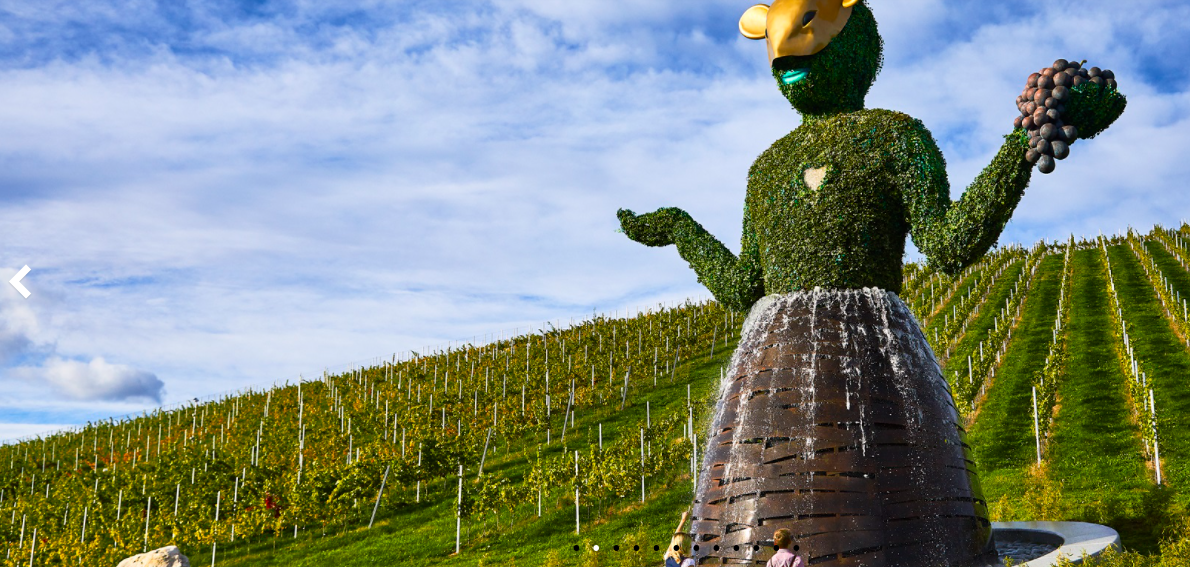Wine Enthusiast
Still considered an insider’s Austrian wine region, even in its own country, Carinthia is experiencing a burgeoning renaissance.
In the 19th century, economic shifts followed by a downy mildew outbreak that destroyed yields and vines led Carinthia’s once thriving viticulture to vanish. Since the 1970s, an eclectic mix of established farmers, small-batch hobbyist producers and young, experimental locals have revitalized the southernmost state’s 1,100-year-old regional wine tradition.
This diverse group has expanded winemaking across the 3,600-square-mile region from less than 10 acres of vineyards in 2000 to approximately 345 acres of vines today.
Several factors have contributed to Carinthia’s evolution. In 1999, the Carinthian Chamber of Agriculture launched a winemaking course that provides professional expertise to new winemakers eager to embrace miles of uncultivated land.
“It wasn’t continuous growth; it happened almost explosively,” says Horst Wild, president of the Carinthian Viticulture Association, which has 180 members, and one of the region’s many hobbyist farmers.
In 2011, more than 100,000 bottles were produced, he says. And, over the past 10 years, Carinthian wine production grew from 26,000 to nearly 119,000 gallons.
Climate change also played a part. In Carinthia, amid Alpine lakes and mountains, vines are planted on terraced hillsides and steep slopes between 1,300 and 2,460 feet with predominantly southeast to southwest exposures.
As temperatures warm, producers expand into areas previously unsuitable for grape production, where they harvest riper grapes, according to the REBECKA project, an initiative funded by the European Union to research climate change in the mountainous wine-growing regions Carinthia and South Tyrol, Italy.
Cold nights in these areas make viticulture challenging, however, and the growing season is short.
“You have to take this into account when planting vineyards,” says Wild. “Grape varieties that ripen extremely late would be difficult.”
Currently, about 80% of Carinthia’s production is white wine. Varieties include Chardonnay, Pinot Blanc, Sauvignon Blanc, Gelber Muskateller, Grüner Veltliner, Traminer and fungus-resistant varieties Muscaris and Solaris.
While Carinthia cannot compete with other Austrian regions in terms of quantitative output, some of its white wines have started to garner national esteem.
“They are dry with a racy acidity, pleasantly light, balanced, soft with medium alcohol and body,” says sommelier Gerald Glinik of Carinthia’s best bottlings. Based in Klagenfurt, Glinik has taught wine courses throughout Austria for more than 30 years and tastes approximately 4,000 bottles annually.
In 2020, Carinthian label Vulgo Ritter won gold medals for its Chardonnay Reserve and Sauvignon Blanc at AWC Vienna, a blind tasting competition. Vulgo Ritter’s vintner, Sabine David, was formerly an industrial engineer. She began to make wine 11 years ago when she planted 200 vines in her grandmother’s orchard.
“Having had no previous viticulture training at all, I didn’t know what to expect,” she says.
To learn the basics, she took a winemaking course at the Obst- und Weinbauzentrum der Landwirtschaftskammer Kärnten, an institute in Sankt Andrä. Since the launch of its professional qualification in 1999, over 500 viticulture enthusiasts became certified Carinthian winemakers and cellarmasters.
Vulgo Ritter spans just 3.2 acres. “That’s not a lot, but all I can handle by myself,” says David.
The smallest vineyard is located on a steep slope and challenging to cultivate.
“No tractor can drive there,” she says. “We harvest manually, mow by hand with the brush cutter and pest management means strapping on the 26 pounds of backpack sprayer.”
Burg Taggenbrunn, Carinthia’s largest winery, also takes a hands-on approach. All pruning, foliage work and grape harvest on the 111-acre plot is done by hand.
Earlier this year, Taggenbrunn’s Syrah 2018 received honors from SALON Austria Wines, the national championship for domestic wines.
Achievements like this make Horst Wild proud, though he says it’s difficult to predict growth prospects. Further development depends on the availability of resources like land and funding.
In the meantime, he expects a good year for Carinthian wine as no hailstorms or late frost damaged the harvest.
“This year’s vintage should take us to over half a million bottles or about a million liters of wine,” he says. Austria produces 63 million gallons annually, making this a tiny but promising drop in the ocean.


